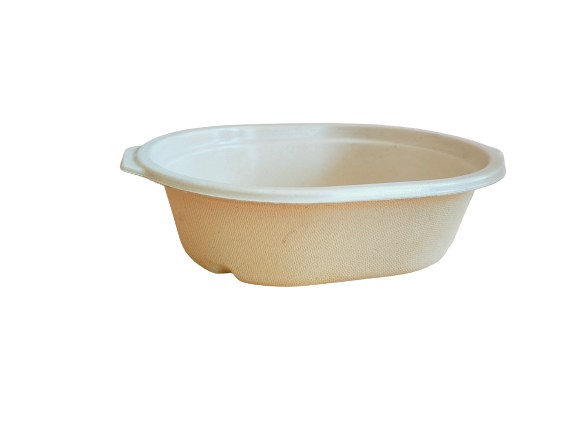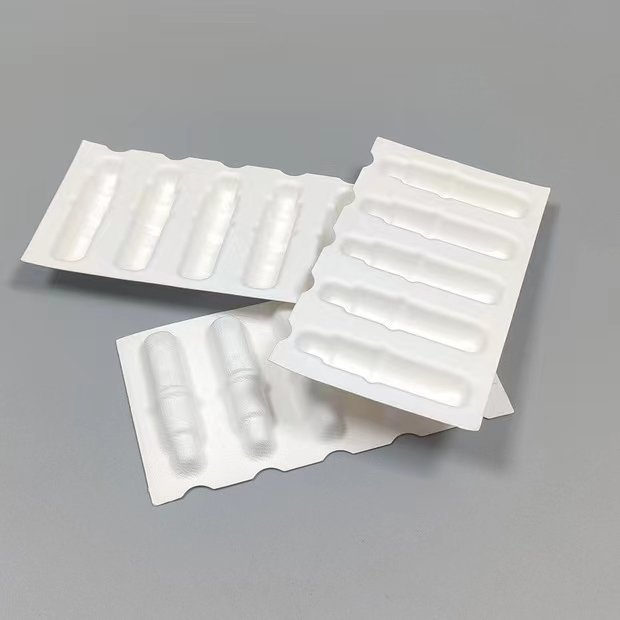Are you curious about the lifecycle of bagasse pulp tableware and how it contributes to sustainability? As the CEO of HMZ Technology, I am passionate about eco-friendly solutions. In this blog, I will guide you through the journey of bagasse tableware from its production to its composting process.
Bagasse pulp tableware is made from the fibrous byproduct of sugarcane processing. It is not only environmentally friendly but also durable and versatile. Understanding its lifecycle can help you appreciate the environmental benefits it offers.
Let’s explore the detailed lifecycle of bagasse tableware.

How is Bagasse Pulp Tableware Produced?
The production of bagasse pulp tableware begins with the collection of sugarcane fiber, a byproduct of sugar production. At HMZ Technology, we source this raw material sustainably. The fibers are cleaned and processed into a fine pulp, which forms the base of our tableware.
The next step is molding, where the pulp is poured into custom molds to shape it into various tableware products. We take pride in our ability to create custom molds at the lowest cost in China, ensuring high-quality and cost-effective solutions for our clients.
Once molded, the tableware undergoes pressing to remove excess water and solidify the structure. This process ensures the products are strong and durable.
What Happens During the Laminating Process?
Laminating is a crucial step that enhances the functionality of bagasse tableware. We apply a thin layer of film, such as PLA, PP, PET, or high barrier films, to the products. This layer provides moisture resistance, extends shelf life, and improves overall performance.
Our ability to customize the laminating film is a significant advantage. We tailor the laminating process to meet specific client requirements, ensuring that our tableware meets diverse needs.
Quality control is implemented at every stage to ensure the highest standards. Any defective products are recycled back into the process, minimizing waste and promoting efficiency.
How Does Bagasse Pulp Tableware Perform in Use?
Bagasse pulp tableware is known for its durability and versatility. It can withstand high temperatures, making it suitable for both hot and cold foods. Our products are microwave-safe, freezer-friendly, and resistant to oil and water.
The structural integrity of bagasse tableware ensures it performs well under various conditions. This makes it a reliable choice for food packaging, whether for everyday use or special events.
Our commitment to quality and customization ensures that our clients receive products that meet their specific needs. This is why procurement managers like Markus Shenng trust HMZ Technology for their packaging solutions.
What Happens to Bagasse Pulp Tableware After Use?
One of the key benefits of bagasse pulp tableware is its compostability. After use, the tableware can be disposed of in composting facilities where it breaks down into natural components. The decomposition process typically takes 60 to 90 days under commercial composting conditions.
Composting bagasse tableware helps reduce landfill waste and returns valuable nutrients to the soil. This contributes to a circular economy and supports sustainable agricultural practices.
The environmental impact of bagasse tableware is significantly lower compared to traditional plastic products. By choosing bagasse, businesses can enhance their sustainability efforts.

Frequently Asked Questions
What makes bagasse pulp tableware environmentally friendly?
Bagasse pulp tableware is made from renewable resources and is biodegradable. It decomposes within 60 to 90 days, reducing environmental impact compared to traditional plastics.
How does the durability of bagasse tableware compare to other materials?
Bagasse tableware is highly durable and can withstand high temperatures. It is microwave-safe, freezer-friendly, and resistant to oil and water, making it a versatile choice for various food types.
Can bagasse tableware be customized?
Yes, at HMZ Technology, we offer extensive customization options for our bagasse tableware. We can adjust the design, size, and laminating film to meet specific client needs.
What types of laminating films can be used with bagasse tableware?
We can apply various laminating films, including PLA, PP, PET, and high barrier films. Each type offers different benefits, such as compostability and extended freshness.
How does HMZ Technology ensure the quality of its bagasse tableware?
We implement stringent quality control measures at every stage of production. This includes tests for strength, moisture resistance, and overall integrity, ensuring our clients receive the best products.
What makes HMZ Technology’s mold production unique?
We produce our molds in-house, which allows us to control the cost and quality effectively. This results in the lowest mold cost in China, providing our clients with cost-effective customization options.
Conclusion
In conclusion, the lifecycle of bagasse pulp tableware showcases its sustainability and practicality. From production to composting, every step is designed to minimize environmental impact and enhance performance. As the CEO of HMZ Technology, I am proud of our ability to produce high-quality, customizable, and eco-friendly tableware. By choosing bagasse, businesses can contribute to a greener future while enjoying the benefits of durable and versatile packaging.
For more information on our bagasse tableware and how we can help you make the switch to sustainable packaging, feel free to contact us or visit our website. Together, we can create a greener future.
Thank you for reading, and I look forward to helping you find the perfect sustainable solution for your needs.

